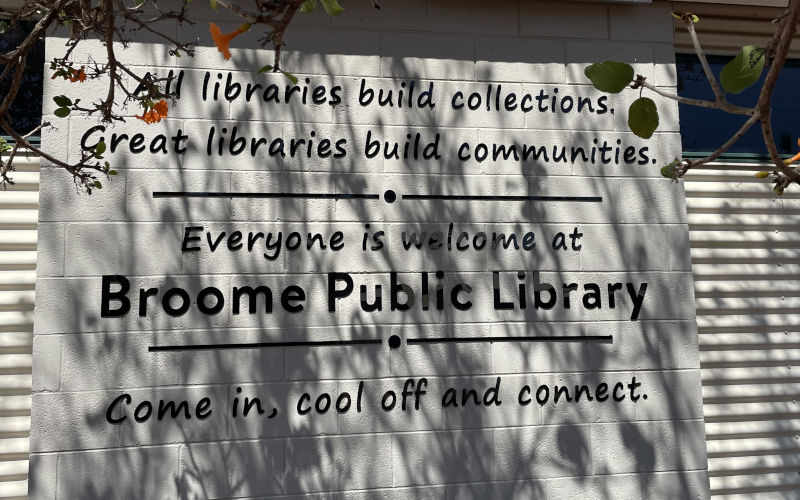The missing link in Australias climate change adaptation strategy: Social infrastructure
October 15, 2023
We have likely crossed a tipping point for Australias temperate broadleaf and mixed forests when a critical level of heat or drought triggers a massive, devastating event. Climate change is driving a new era of unnatural disasters and as a country we are not prepared to cope. Australian Climate Council, 2021.
September 2023: Australia records its driest September in history, averaging 4.83cm rainfall. New South Wales, Victoria and Western Australia mark their hottest September days ever. Early October: bushfires raged, followed by severe flooding in Victoria. June to August 2023 were the hottest months ever on earth. Welcome to the new normal.
The Australian Climate Council warns we have likely crossed a tipping point for Australias temperate broadleaf and mixed forests when a critical level of heat or drought triggers a massive, devastating event. The Council states: Climate change is driving a new era of unnatural disasters and as a country we are not prepared to cope. consecutive, record-breaking events can overwhelm emergency services and devastate communities.
Climate change now driven by an El Nio event in Australia means more heatwaves, increased fire danger and extreme weather. Have we prepared adaptation and survival plans? The Productivity Commission estimates we spend 97% of its disaster funding on mopping up and just 3% on getting ready. The short answer is no.
Getting ready means bushfire preparation, resilient communications for disasters, workplace emergency training and skilled emergency responders.
Something is missing: a national plan to develop Australias social infrastructure to provide shelter, support and community connections during climate events and natural disasters. Planning for social infrastructure community centres, showgrounds, universities, schools and libraries is often left to local councils, but needs to be elevated to state and national policy levels, directly connected to disaster preparedness. By contrast, current Australian plans emphasise social recovery, not social preparation.
During extreme weather events, Hard infrastructure breaks down. Power goes out, transit breaks down, water may not run. Social infrastructure in a disaster can make the difference of life and death, writes Eric Klinenberg. Klinenberg emphasises the value of public libraries as social infrastructure in US cities, including as shelter from heatwaves. A fictional parallel to his work takes place in the 2004 science fiction film The Day After Tomorrow: the films major characters take refuge in the New York Public Library from a storms massive waves and deep freeze. Then in 2012, Hurricane Sandy resulted in New York Citys highest storm surge on record, with 17% of city flooded, equating to 130 square kilometres. Art imitated life and then life imitated art again.
During the February 2022 Lismore floods, Southern Cross Universitys campus became the primary emergency evacuation centre [where] more than 1000 people gathered, the home for police and community services, food distribution, 3 re-located schools with 1800 students and more than 500 ADF personnel with Blackhawk helicopters. It functioned as a model social infrastructure safe gathering point to coordinate recovery and keep community connections.
Social infrastructure awareness is growing. Sam Henderson highlights the value of soft infrastructure [assets that support] community cohesion, preparedness, and commitment that plays an instrumental role in disaster response, recovery, and regeneration. Its time to shift the paradigm in disaster management. We must rebalance our priorities and allocate resources more equitably between hard and soft infrastructure. By contrast the Australian Disaster Resilience Conference emphasised hard infrastructure a reminder of the Productivity Commissions findings on the unbalanced emergency investment.
University of Sydneys Environment Institute also uses the language of social infrastructure. Professor Daniel Aldrich says diverse social networks matter during climate crises, which can be deepened and broadened by building social infrastructure such as parks, libraries, cafes, community spaces, and places of worship.
Its not just flooding. Australian heatwaves have beenresponsible for more human deathsthan any other natural hazard, including bushfires, storms, tropical cyclones, and floods.During the 1939 Black Friday bushfires, 71 people died in Victoria. But at least420 people died in the heatwaves leading up to those fires . Similarly,173 peoplediedduring the 2009 Victorian bushfires,butanadditional 374 peoplediedin the heatwavebefore the fires.Western Sydneys Penrith home to hundreds of thousands of residents was the hottest place on earth on 4 January 2020, reaching a high of 48.9 degrees Celsius surpassing its 2018 hottest place record of 47.3 degrees.
Natural disaster, environmental and climate impacts are also social justice issues, making existing inequalities and injustices a whole lot worse. Vulnerable and disadvantaged people experience the worst outcomes in natural disasters: The US Urban Land Institute reports poorer US communities can be up to 20 degrees (Fahrenheit) hotter than wealthier neighbourhoods because of historic public disinvestment in green space and tree canopy. The geography of Australian cities such as Sydney show more heat and flooding in more disadvantaged locations: Climate change impacts in Australia show that geographies of heat risk may also coincide with spatial patterns of relative socio-economic disadvantage, reports the University of Sydney. So lets add heat inequality to income, wealth and other inequalities experienced by Sydney-siders.
Social infrastructure also just makes sense: The residual benefit of investing in climate security through social infrastructure is that we could dramatically improve the quality of life in these places all of the time, regardless of the weather."

